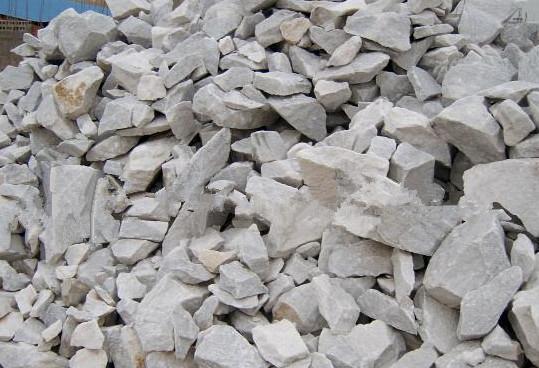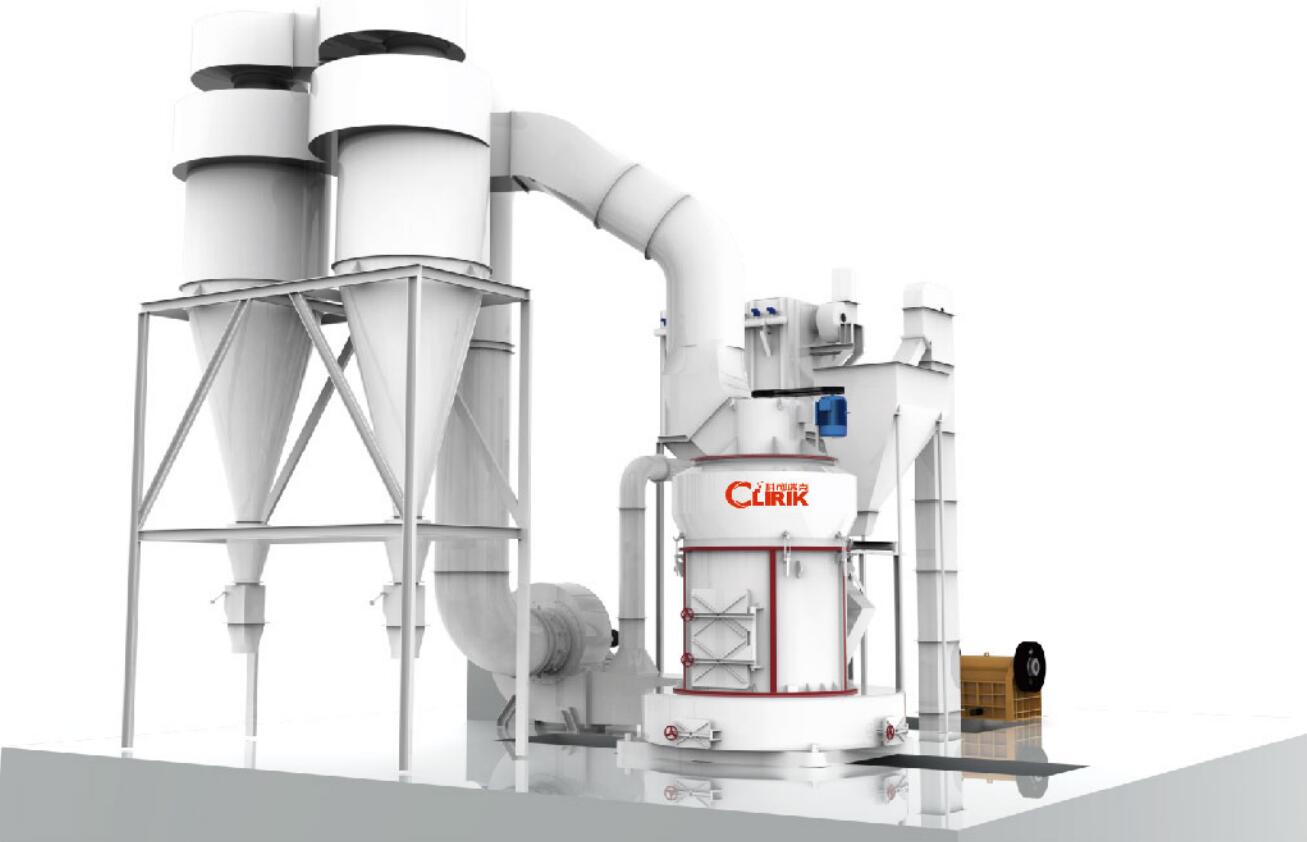Dolomite grinding mill for 325| 400| 600| 800| 1000| 1250 mesh
Source:nclirik
Posted:2021-07-28
What are the uses of dolomite?
Dolomite becomes dolomite powder after sorting, crushing and grinding to 325~1250 mesh. The common fineness of dolomite powder is 325 mesh, 400 mesh, 600 mesh, 800 mesh, 1000 mesh, 1250 mesh.
The purpose of modification is to change the surface alkalinity of dolomite powder, overcome the bonding performance between filler and rubber, reduce shrinkage and internal stress, prevent crack propagation, and improve the processing performance of product strength.

Iron dolomite refers to a mineral in the isomorphic series formed when Fe2+ is more than Mg2+ in the composition of dolomite.
Hardness 3.5, crystal form is prism, usually granular or massive aggregate.
Iron dolomite can be used in building materials, ceramics, glass and refractory materials, chemical industry, agriculture, environmental protection, energy saving and other fields.
It is mainly used as a flux for alkaline refractory materials and blast furnace ironmaking; production of calcium-magnesium phosphate fertilizers and preparation of magnesium sulfate; and ingredients for the production of glass and ceramics.
The most common use of dolomite powder is to mix into the glaze as a flux. Dolomite is an important calcium and magnesium resource on the earth, and it has extremely rich reserves in the world.

Dolomite is mainly used in the following major industries:
- 1. Metallurgical industry
- 2. Magnesium smelting industry
- 3. Refractory materials
- 4. Chemical industry
- 5. Agriculture
- 6. Coatings.
Dolomite powder production process
Step 1.
The crushed dolomite ore is transported by a special vehicle to the raw material warehouse, and then the material is sent to the jaw crusher by a forklift/manually for crushing, and crushed to be smaller than the feed size of the mill.Step 2.
The dolomite ore crushed by the crusher is lifted by the elevator to the storage hopper, and the storage hopper is discharged and the feeder feeds the host evenly.Step 3.
The qualified products in the grinding and grinding process are screened by the screening system and then enter the collector through the pipeline. After collection, they are discharged through the discharge valve to become the finished product, and the unqualified products fall into the main machine and re-grind.Step 4.
The airflow after purification of the finished product flows into the blower through the residual air pipe above the dust collector. The air path is cyclic. Except for the positive pressure from the blower to the grinding chamber, the airflow in the remaining pipes flows under negative pressure, and the room is hygienic. Good indoor sanitary conditions.CLIRIK HGM dolomite grinding mill
- CLIRIK HGM series dolomite grinding mill is an industrial grinding mill that can grind solid materials into ultrafine powder. HGM dolomite grinding mill is usually used in mining, metallurgy, building materials, chemical and mine industries.
- HGM dolomite grinding mill is suitable for the ultrafine grinding of all kinds of crisp materials whose Moh’s hardness is below 7, such as dolomite, marble, granite, calcium carbonate, barite, calcite, limestone, kaolin, bentonite, marble, gypsum, quartz, feldspar, clay, talc, fluorite, white mud, mica, refractory material, glass, total about 1000 kinds of materials.
- Output fineness: 200meshes-2500meshes, 5-74 micron.
- Capacity ranges from 0.4T/H to 45T/H.
- Feeding size: less than 20 mm

Parameter of CLIRIK HGM dolomite grinding mill
| Model | HGM80 | HGM90 | HGM100 | HGM125 | HGM168L |
| Ring Diameter(mm) | 800 | 900 | 1000 | 1250 | 1680 |
| Ring Number (PCS) | 3 | 3-4 | 4 | 4 | 4 |
| Roller Number(PCS) | 18-21 | 24-29 | 28-36 | 30-44 | 30-40 |
| Main Shaft Speed (r. p. min) | 230-240 | 200-220 | 180-200 | 135-155 | 120-130 |
| Input Size (mm) | ≤10 | ≤10 | ≤15 | ≤15 | ≤20 |
| Finished Size (um/mesh) |
74-5 (200-2500) |
74-5 (200-2500) |
74-5 (200-2500) |
100-6 (150-2000) |
100-9 (150-1500) |
| Capacity (t/h) | 0.4-4.5 | 0.6-6.5 | 1-9 | 2-16 | 3.8-30 |
| Outlet Size L*W*H (m) | 13.9*4*6.2 | 14.7*4.8*7.2 | 18*4.6*8.6 | 14*9*10.25 | 26.3*7.5*11.9 |
FAQ
Who we are?
Shanghai CLIRIK Machinery Co.,Ltd. has been committed to the field of ultra-fine powder grinding machines for 20 years.CLIRIK has a first-class manufacturing base with standardized and intelligent production lines.
CLIRIK's professional R&D, sales, installation and after-sales teams have provided door-to-door services to more than 100 countries and regions.
Which models can be selected for processing ultra-fine powder?
HGM grinding mill: 74-5 micron(200-2500 mesh); D97=5 micronYGM Raymond mill: 613-33 micron(30-325 mesh); D90=30 micron
CLUM vertical roller mill: 20-5 micron(600-3000 mesh); D50=2 micron D97=4 micron
What information should customers give us in order to let us provide more efficient & suitable quotation and assistance?
1. What kind of material do you process?2. What is output size do you need?
3. What is capacity do you need?
What about the price?
We would give you a latest price according to the model and quantity.How to get the latest quotation?
You can leave a message online or contact CLIRIK directly:Email: [email protected]
WhatsApp: +8613512155195/+8613917147829
Further Reading:
Specific application of dolomite
1. Refractory
Dolomite is one of the important raw materials of alkaline refractories, mainly used for steel-making converter lining, open hearth furnace, electric furnace wall, and secondly used for thermal equipment such as external refining equipment and cement kilns. Dolomite can be used to make dolomite bricks; when dolomite bricks are used as furnace lining, the method of spraying dolomite gunning materials can significantly increase the life of the furnace.2. Magnesium smelting industry
Dolomite with a raw ore particle size of 30-120mm is an important raw material for the production of metallic magnesium. The method of smelting magnesium from dolomite is mainly divided into two categories, electrolysis and silicothermal reduction. The electrolysis process is complex and difficult to obtain economic benefits, so small magnesium plants should not use this method; the silicothermal reduction method is to calcinate dolomite It is mixed with ferrosilicon and fluorite to make balls, which are heated in a vacuum furnace at 1100°C to reduce magnesium vapor and other substances, and then the magnesium vapor is cooled and recovered and cast into magnesium ingots.3. Production of magnesium compounds
Dolomite can produce magnesium compounds such as magnesium carbonate, magnesium oxide, magnesium sulfate, and magnesium hydroxide. At present, there are mainly three types of magnesium carbonate produced: light magnesium carbonate, light spherical magnesium carbonate and light transparent magnesium carbonate. Light magnesium carbonate is the basic raw material of inorganic chemical industry. It is mainly used in the manufacture of magnesium salts, magnesium oxide, elemental magnesium, fireproof materials, printing inks, ceramics, household chemicals, fillers and reinforcing agents for rubber products. It can also be used in shipbuilding, Boiler, steelmaking, glass, paint, medicine and other industries. As a filler, magnesium oxide is widely used in industries such as rubber, enamel, wire and cable. Magnesium sulfate crystals (MgSO4·7H2O), also known as diarrhea salt, are used in medicine, agriculture, cement, printing and dyeing, and food.4. Production of glass
Dolomite and limestone are the third largest components of glass raw materials except silica sand and soda ash. In the production of bottle glass, soda ash is the most expensive component. The addition of limestone can partially replace soda ash, but it will have adverse effects. The introduction of magnesium oxide in dolomite can further reduce costs. Dolomite can also provide calcium oxide in the glass industry, adding soda-ash-silica system to act as a flux. In addition, dolomite can also reduce glass aging, prevent chemical corrosion caused by the atmosphere or moisture, improve the plasticity of colored glass, and increase the strength of glass.5. Production of ceramics
Dolomite is used in the blank and glaze, and MgO and CaCO3 are introduced to replace talc and calcite. The role of MgO is to change the composition of the mixing system, thereby reducing the firing temperature of the green body; promoting the dissolution of quartz and the formation of mullite, increasing the amount of quartz and reducing the amount of feldspar, thereby increasing the transparency of the green body. Adding dolomite to the glaze is less prone to smoke than the calcite-added glaze, and crystallization rarely occurs.6. Production of paint
Dolomite can produce new type extender pigments. Its chemical composition is stable, and it has many advantages such as weather resistance, anti-settling property, fine powder, easy dispersion, high whiteness, low cost, and unique craftsmanship. It can be used in various paints. The coating produced has the characteristics of reducing the amount of titanium dioxide, high hardness, good hand feeling, good flu, strong adhesion, etc., and the application effect is better than that of heavy calcium carbonate.7. Garden decoration materials
Dolomite is not only the main mineral raw material for artificial marble and terrazzo (light) stone, but also some densely structured and fine-textured dolomites are also used as decorative materials and craft materials. Dolomite is processed into new decorative materials such as floor tiles, wall tiles and boards. It has many characteristics such as light weight, high strength, anti-aging, beautiful appearance, etc., and is deeply favored by people. Decorative railings and ornaments made of dolomite as the main material are also very popular.8. Adjust soil pH
Since long-term use of urea and other fertilizers is likely to cause the soil to be acidic, dolomite can be added directly to the urea to keep the soil at an appropriate pH value, which can generally increase crop yields by 15-40%, and can also improve the efficacy of herbicides. Dolomite can also compensate for the loss of magnesium content in the soil. It can be used as a fertilizer filler to improve the conditions for plants to use soil nutrients, reduce agglomeration, and facilitate the adjustment of the fertilizer ratio.Related Newsmore >>
- CLIRIK Welcomes a Surge of Visitors During CHINACOAT 2025 Season — Free Shuttle to Pudong Showroom N2025-11-25
- Ultrafine Grinding of Recovered Carbon Black (rCB) Using HGM Mill2025-10-23
- HGM Ultrafine Grinding Mill for Limestone in Cement Industry2025-10-15
- Happy China National Day 20252025-09-29
- CLIRIK Ships HGM Mill to India: Fine Limestone Powder for Rubber & Plastic Fillers2025-09-25
- CLIRIK Mill Processing CaCO₃ at 500,000 tons/year, 600–3000 mesh2025-08-29













